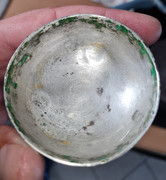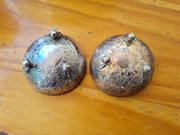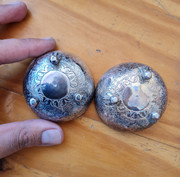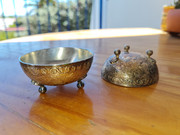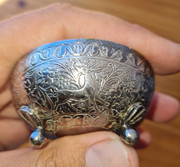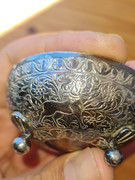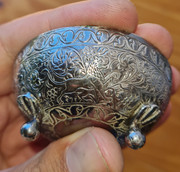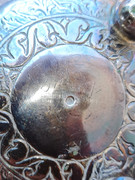Hi Jannie,
I interpreted one of your questions to ask if it is common to silver-plate over top of solid silver (as opposed to silver-plating on top of a silver coloured base metal).
I can share the case of an Indonesian Yogya/Djogja spoon I have which was made from low-grade (~40%) silver and was then silver-plated.
The silver-plating has been removed on the back of the bowl and you can see a distinct orange tinge which I assume can be attributed to the high copper content of the silver alloy.
In addition to the light orange tinge, the underlying alloy appears to be non-homogenous as there are scattered patches of a deeper copper colour. One possible explanation for this could be that some of the copper never fully melted and mixed in with the alloy as it has a slightly higher melting point than silver.
I was surprised when the XRF result aligned with the marks and showed just over 40% silver content, and it seems in the case of this spoon that is was silver-plated in order to cover up the orange-tinge and mottled surface.




Besides this spoon, I also have a silver bowl from India which I suspect may be silver-plated on top of an 80%-90% silver alloy.
As you mentioned the inside of your cellar has been sanded, you could consider applying an acid test to the inside of the bowl to confirm they are silver and then remove the stain with additional sanding.
